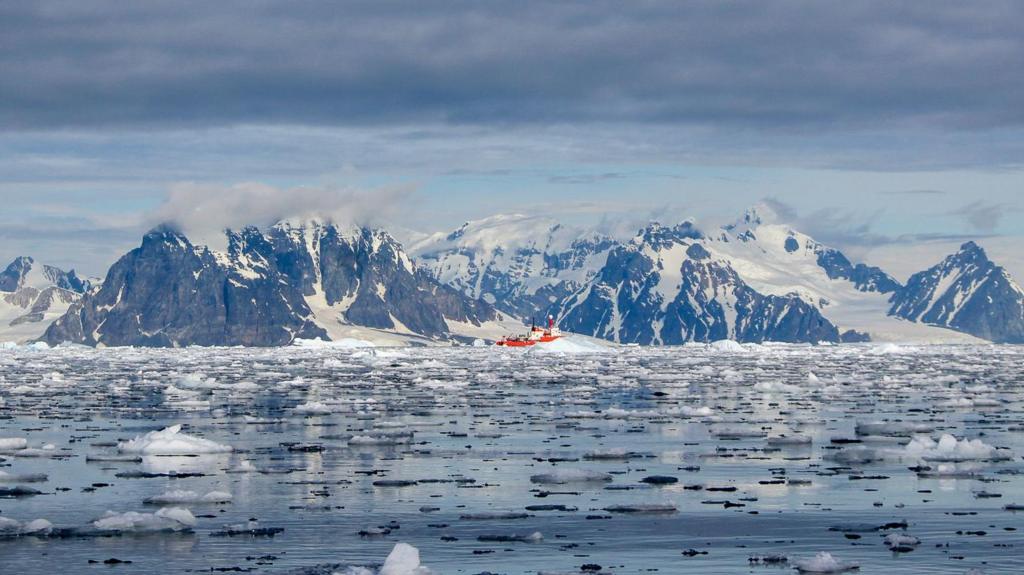Why would researchers willingly endure frigid temperatures, icy winds, and turbulent seas, sometimes toiling through the night, to extract mud from the Antarctic seabed?
Earlier this year, an international team of particularly intrepid researchers embarked on just such a mission in the remote Antarctic Peninsula, aiming to unlock centuries of scientific secrets held within the Southern Ocean.
These precious mud samples will now be shared among scientists worldwide for analysis, seeking to determine how human activities, including a century of industrial whaling, have impacted Antarctica and the broader global environment.
This research forms part of a larger global effort to elucidate the intricate relationship between the ocean and the climate.
Researchers employed a specialized coring drill, akin to a large apple corer, tethered to a research vessel, to bore into the seabed at depths of up to 500 meters.
From various locations around the peninsula, they successfully collected over 40 long cores, or tubes, of seafloor sediment.
This region stands as one of the most biologically diverse habitats in Antarctica, serving as a focal point for fishing, tourism, and, before its prohibition in the 1980s, industrial whale hunting.
According to lead researcher Dr. Elisenda Balleste from the University of Barcelona, collecting sediment provides insights and clues to the past, “like a book of history.”
She explained that layer upon layer of sediment, accumulated over centuries, records “what is living in the seas now, what was living in the seas in the past and evidence of our human impact.”
By preserving and dating these layers and analyzing their contents, researchers can reconstruct a historical narrative of Antarctic marine life.
Once aboard the ship, the cores were frozen and transported to Dr. Balleste’s laboratory in Barcelona.
From there, meticulously extracted portions of this Antarctic mud will be distributed to various academic institutions worldwide.
Scientists will scan and date the sediment layers, identify the microbial life they contain, measure pollution levels, and quantify the amount of carbon buried within the mud.
This endeavor is part of the Convex Seascape Survey, a global initiative involving universities and research institutions collaborating to enhance our understanding of the interconnectedness between our ocean and climate.
Claire Allen, an oceanographer from the British Antarctic Survey with over 20 years of experience studying Antarctica’s past, emphasized the particular value of such cores.
She stated that “before 1950 – before there was any kind of monitoring capacity in Antarctica – sediment cores and ice cores are the only way that we can get an insight into any of the climatic or physical properties that have changed over time.”
The newly collected samples designated for DNA analysis must be maintained at temperatures low enough to halt all biological processes.
Dr. Balleste briefly presented these samples, taken from the industrial-sized freezer where they are stored.
“They’re kept at minus 80 degrees to stop them degrading,” she explained.
These small pieces of the seabed, preserved in time at temperatures that safeguard genetic material, will undergo environmental DNA analysis.
This scientific field has experienced rapid advancements in recent years, enabling researchers to extract genetic information from water, soil, and even air, akin to a fingerprint of life left in the environment.
Dr. Carlos Preckler, from King Abdullah University in Saudi Arabia, is leading this aspect of the research, aiming to quantify the impact of nearly a century of industrial whaling in Antarctica on the ocean and our atmosphere.
Carbon, when released into the atmosphere as carbon dioxide, acts as a blanket, warming our planet.
Consequently, as the world strives to reduce these emissions, any processes that absorb and sequester significant amounts of carbon could contribute to curbing global warming.
“We know whales have a lot of carbon in their bodies, because they are huge animals,” said Dr. Preckler.
He and his colleagues seek to determine how much of that carbon is buried in the seafloor and sequestered away from the atmosphere upon the animals’ death.
“We can measure whale DNA and the carbon in the sediment,” explained Dr. Preckler.
“So we can measure what happened before industrial whaling removed most of the whales in the [Southern] ocean,” he added.
The researchers assert that this will provide a measure of the extent to which whales, simply by existing, being massive, and living out their natural lives, remove carbon from our atmosphere and contribute to the fight against climate change.
The British Growers Association warns that supplies of broccoli are ‘tight’ thanks to the heatwave.
A whale’s skeleton has fascinated visitors to the Manx Museum for decades, but how did it get there?
Has autumn come sooner than expected to the UK – and does it even matter if it has?
The most striking science photos of the week: including the Perseid meteor shower and glowing underwater wonders.
The latest round of UN-led talks have ended in deadlock, with disputes over plastic production and recycling.

